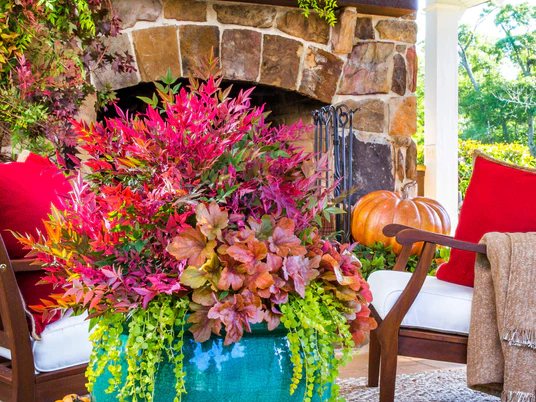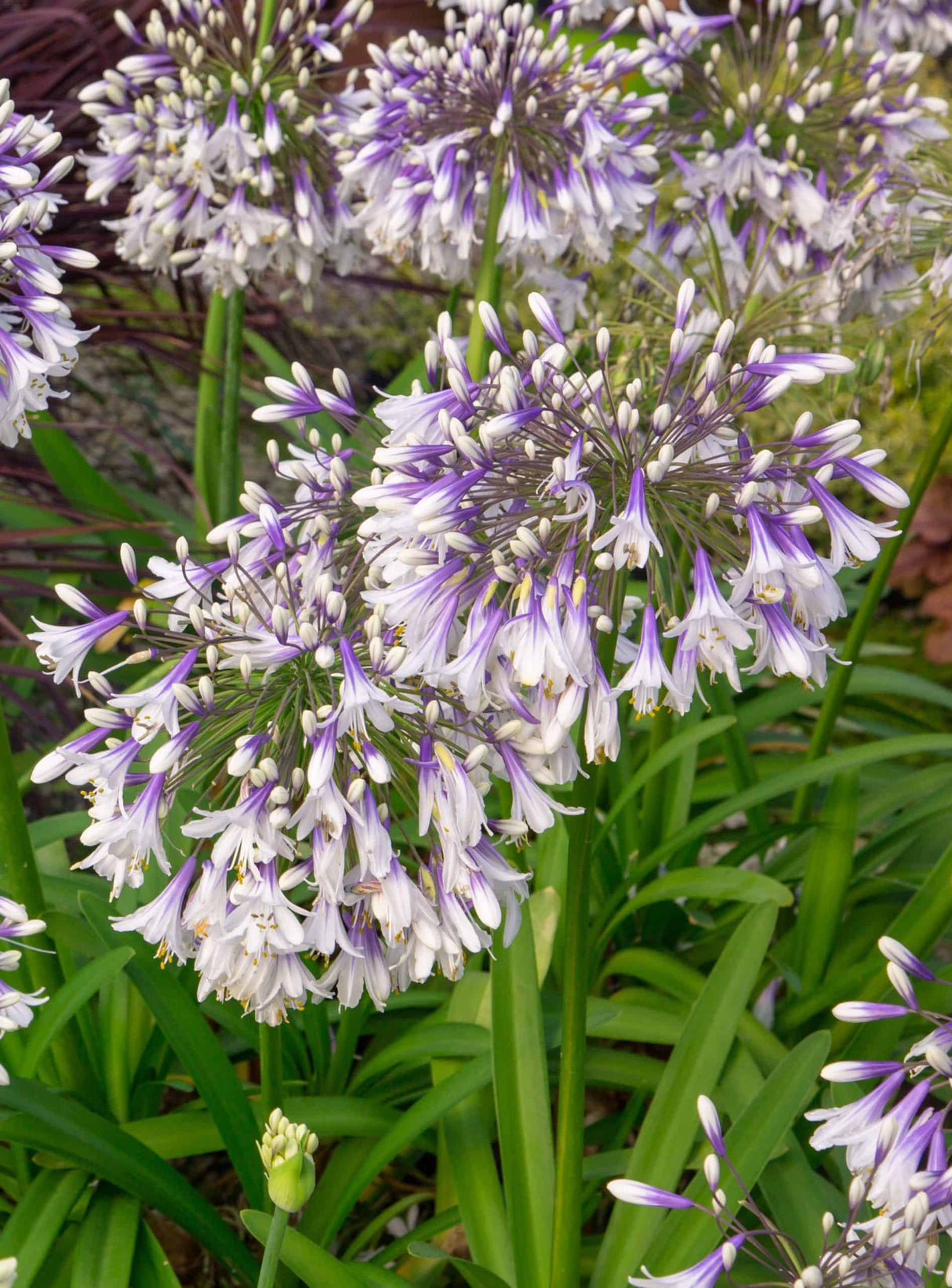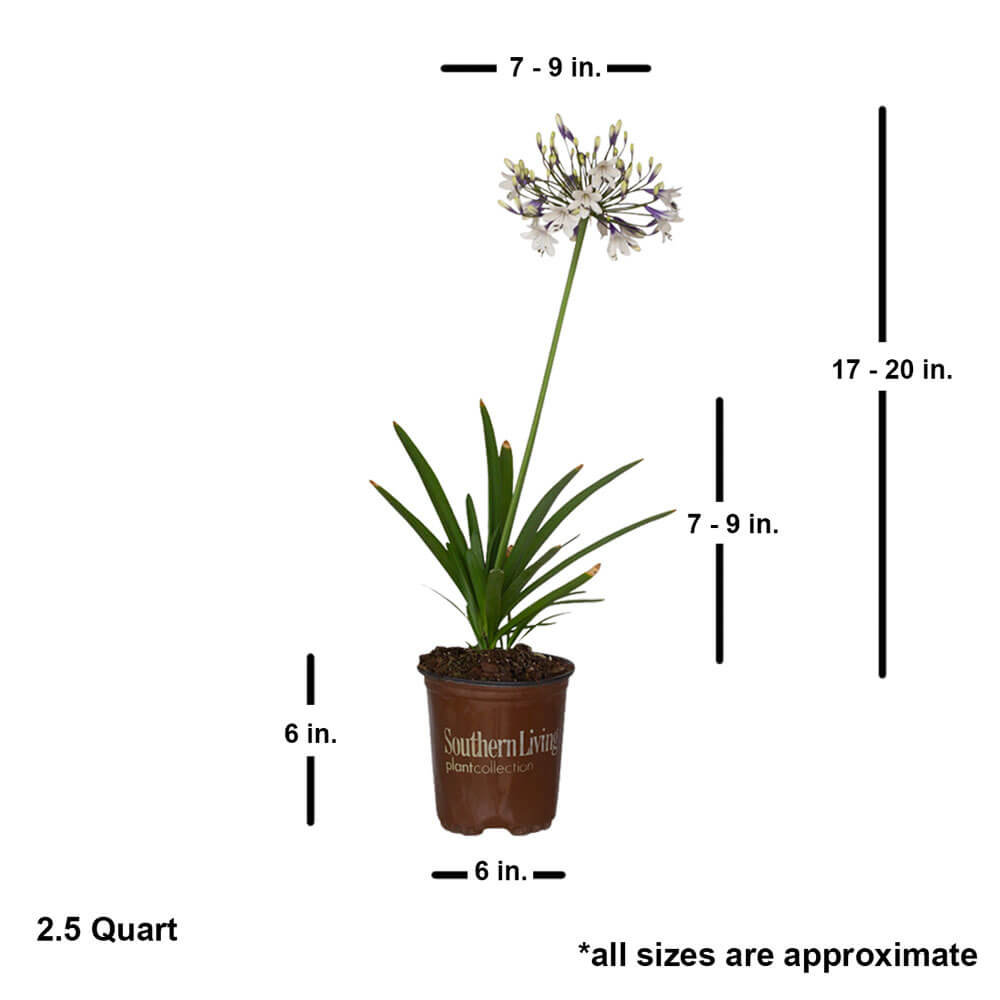Ever Twilight Agapanthus
Ever Twilight Agapanthus - 2.5 Quart is backordered and will ship as soon as it is back in stock.
Description
Description
The Ever Twilight™ Agapanthus (Agapanthus hybrida 'MDB001' PP30162) is a new beauty from the Southern Living Plant Collection! It produces large globular clusters of trumpet-shaped white and violet-blue flowers. These blooms to begin much earlier than most other varieties in spring and then continue into summer.
Its foliage is thick and straplike, with a leathery texture. Additionally, these leaves are consistently bright green and attractive. It's semi-evergreen, so warmer USDA Zones will find it to be evergreen, while colder Zones may see it as a deciduous perennial.
This is a semi-dwarf agapanthus variety that reaches about 24-30" H x 16-18" W. It has a naturally clumping habit, so it won’t take over your garden. However, as with many perennials, divide these perennials every 3-4 years to prevent crowding.
Use this as a border plant along a walkway, as an accent in a mixed garden bed, in a container, or as a mass planting.
Check out a few other Southern Living Plant Collection Agapanthus varieties, the Neverland Agapanthus, Queen Mum Agapanthus, and the Little Blue Fountain Agapanthus.
Ever Twilight Agapanthus Care
Hardy in USDA Zones 8-11, down to 10°F when established. We recommend covering your new plants overnight during hard freezes.
Plant in Part Sun for best results. 3 hours or more is generally recommended for optimal blooming and foliage.
Water 3-4 times per week during the first growing season. In the second growing season, provide supplementary water in times of extreme heat and drought.
The Ever Twilight Agapanthus prefers garden soil with good drainage for best results.
Perennials rarely need supplemental fertilizer, however, 3-4 inches of compost around the plant yearly provides nutrients to keep the plant happy and healthy.
How to Plant:
- First, find a suitable planting location based on the planting specifications listed above
- Dig a hole roughly three times as wide as the pot that your plants came in.
- Don’t dig the hole deeper than what will allow for your plant to sit evenly with the ground around it. For slower draining soils, dig a slightly shallower hole so your plant will sit a couple of inches above the soil around it. Mound the soil around the base of the plant.
- Mix your native soil with some rich garden soil or compost to encourage new root growth and expansion.
- Tease the root ball with your hands or a gardening tool to loosen the ball of roots.
- Place the plant in the hole and backfill around it with your dirt mixture.
- Water your new planting deeply to settle the soil and hydrate your plant.
- Now is a good time for a light fertilizer application. If you’re planting in mid to late fall or summer, use a root rocket fertilizer. If you’re planting in spring or early fall, use a slow-release balanced plant fertilizer. We don’t recommend using liquid fertilizer on new plantings.
Care & Use
Care & Use
Spacing Recommendations
Spacing Recommendations
-
Scientific Name
-
Hardiness Zone8, 9, 10, 11
-
Sun ExposureFull Sun to Part Shade
-
Evergreen or DeciduousEvergreen
-
FeaturesAttracts Birds / Butterflies, Disease Tolerant, Drought Tolerant, Dwarf, Fast Growth, Flowering
-
Feature ColorGreen, White
-
UsesAccent, Border, Container, Cut Flowers, Groundcover, Mass Planting, Mixed Garden Bed, Woodland Garden
-
Water NeedsMedium
-
Bloom SeasonSpring, Fall
Growing Zones : 8, 9, 10, and 11


Southern Living Plants








